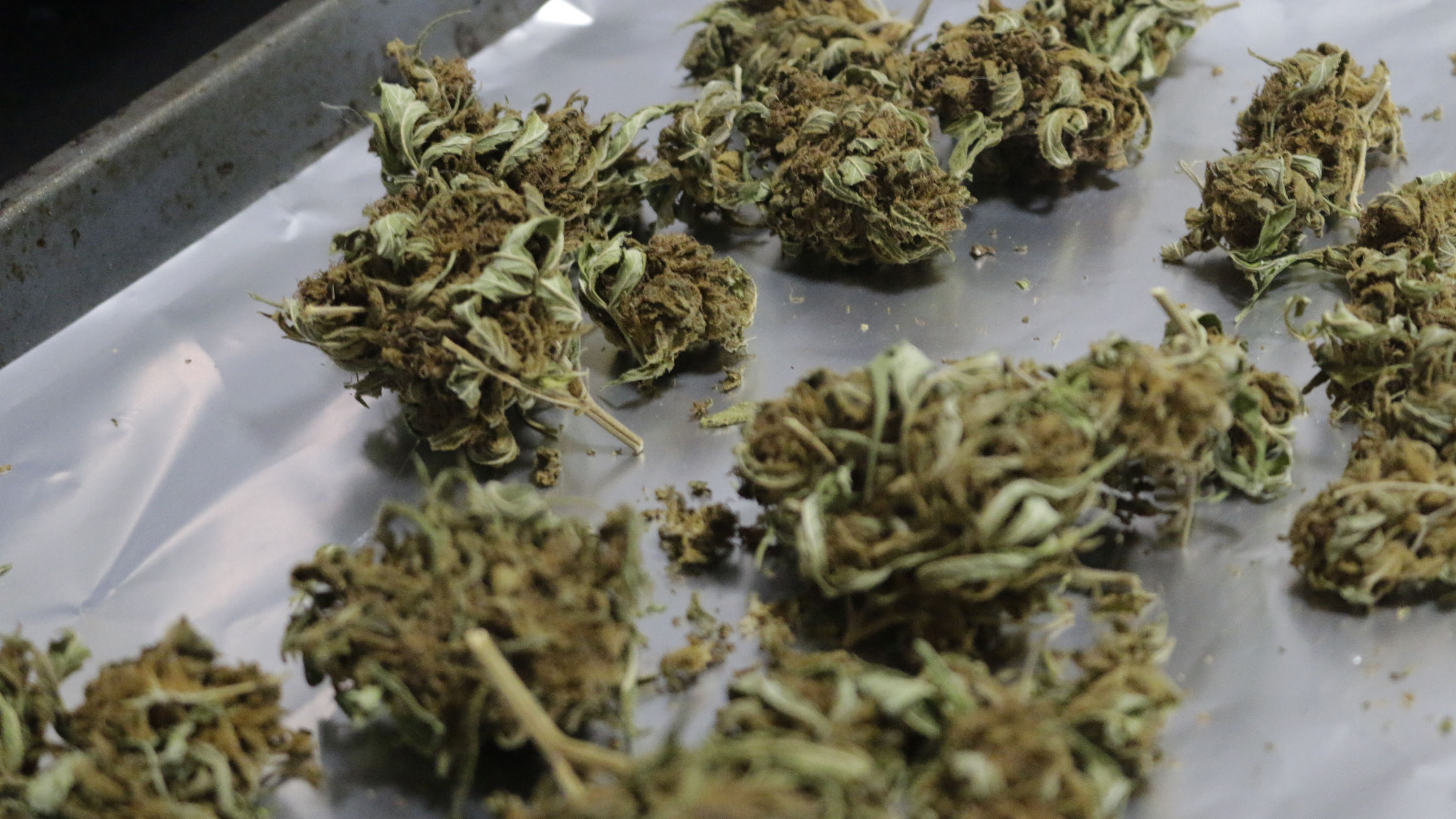How to Make Cannabutter for Medical Cannabis Edibles
A Cannabutter Recipe for Your Cannabis Medicine
Cannabutter, sometimes known as “weed butter” is an essential part of making your own cannabis edibles as a medical cannabis patient.
While dispensaries offer some incredible edibles products, many states have regulations on dosing per edible or per package, with some medical cannabis patients finding that these products do not meet their needs.

Making weed butter gives patients the freedom to dose their homemade edibles however they choose, providing them endless opportunities through which they can explore cannabis infused foods.
Cannabis Butter as a Foundation for Cannabis Edibles
At Compassionate Clinics of America, we empower our patients to explore marijuana edibles through our Recipes section of our website and through our bi-monthly newsletter, with many recipes calling for cannabis butter as a critical ingredient.
Cannabutter is an excellent way for medical cannabis patients to ingest cannabis, as butter is high in saturated fat, increasing the bioavailability of our cannabis, or how well our bodies receive the cannabis.
Here we share the process of making your own cannabutter, including what ingredients to use, how to figure out dosing, and some key things to keep in mind when you make cannabutter for edibles.
What Your Need to Make Cannabutter
To make your own cannabutter, you’ll need the following:
- Cannabis flower of your choice (be aware of the percentage of THC and other cannabinoids on the package)
- A baking sheet and parchment paper for the decarboxylation process (see below)
- Your preferred butter product, with unsalted butter being the best for medical cannabis edibles
- A crockpot/slow cooker, or a saucepan, depending on which method you choose
- A strainer (a fine-mesh strainer) or cheese cloth – a coffee filter will also do
- A mason jar (or other airtight container to store your cannabis)
Choosing Your Butter
We don’t expect that you’ll be churning your own butter to make cannabis infused butter, so naturally the first step of making weed butter is to choose the foundation of your cannabis butter, whether that be unsalted butter or clarified butter.
We recommend not using salted butter to reduce the salt levels you will be ingesting through your cannabis medicine.

Some may choose to use ghee as an alternative. We’ll talk about how to use oils such as vegetable oil or coconut oil as an alternative a bit later in the article.
Decarboxylating Your Cannabis to Make Infused Butter
Decarboxylated cannabis is an essential part of cannabis butter and the infusion process. Decarboxylation involves heating your cannabis flower in order to activate the THC.
Before THC goes through this process, it presents in the form of THCA, which does not have the psychoactive effects of THC. Heating cannabis flower through decarboxylation converts the THCA to the psychoactive THC as an essential part of a cannabis infusion process.
For decarbed cannabis, follow this process:
- Preheat your oven to 250°F
- Line a baking sheet with parchment paper
- Break your buds up by hand, into not-too-small pieces – you want to be sure to preserve trichomes where all the cannabinoids and terpenes are
- Spread your buds on the baking sheet on top of the parchment paper

- Once your oven is preheated, put in the tray and bake at 250°F for 25-30 minutes. Alternatively, a slightly cooler 230°F for 45 minutes can preserve more terpenes.
- When the time is up, remove the tray from the oven, allowing the buds, which will have gone from green to a light brown color to completely cool before grinding it and adding it to your canna butter
Remember that you will not experience the psychoactive effects of cannabis unless it has gone through the decarboxylation process. Also be prepared for a smelly cooking space. Use a fan and air your space as you’re able.
Dosing Your Weed Butter
When making weed butter it’s extremely important to understand how much cannabis in relation to how much butter you are infusing.
With a simple search online you will see dosage calculators, such as this one by Emily Kyle Nutrition where you can input the percentage of cannabinoids in your flower, how much flower you’re using, and choose “butter” as your starting material.
The general rule when making cannabutter is 1 ounce of flower to 2 cups of butter, which is 4 sticks of butter. When you are making a smaller amount, that would equate to a 1/2 ounce of marijuana flower per 1 cup of butter (2 sticks), an eighth per quarter cup, and so on.
We recommend doing the math to understand just how much THC will be in your cannabutter so you don’t have that one outer-space experience that many people seem to have had with pot brownies they didn’t know the potency of.
How to Make Cannabutter: A Step-By-Step Guide
There are two ways to make your own cannabutter, on a stovetop or using a crockpot. Here we’ll provide a simple way to make cannabutter using either method. For the purposes of each cannabutter recipe, we will use a measurement of 1 ounce of cannabis to 2 cups of butter, but we invite you to use the amount of butter and cannabis of your choice and convert this recipe accordingly.
Making Cannabutter with a Crock Pot
Follow this simple process if you choose to use the slow cooker method for your homemade cannabutter:
- Blend 2 cups (470 mL) of water with 16 ounces (450 g) of butter (equivalent to approximately 4 sticks) in the slow cooker before turning it on. This infusion of water serves as a protective measure, preventing both the butter and cannabis from scalding as they undergo the cooking process, and preserves the potency and effectiveness of the flower.
- Switch on the slow cooker, selecting the low heat setting, and give it a gentle stir. Ensure the temperature stays within the range of 200–250 °F (93–121 °C). Allow the butter to fully melt before moving on to the next phase.
- Grind your decarboxylated cannabis, but not too vigorously.
- Pour the ground cannabis into the slow cooker and thoroughly mix the flower into your melted butter. Following this, secure the lid on the slow cooker
- Monitor the butter mixture as it simmers and stir occasionally. This is essential to prevent the cannabutter from burning or reaching a boil, as both scenarios can compromise the THC content and efficacy
- Cook on low heat for 2-3 hours for low potency, and up to 8 hours for higher potency; generally, the longer you cook, the more heavy the infusion.
- Once your cannabutter is ready, use a strainer or cheese cloth to pour the infused butter into your mason jar for storage. This process helps separate the plant material from the butter. You can choose to toss the cannabis plant pulp or use that for other recipes, such as baking it into muffins.
- Let your cannabutter cool a bit before putting it in the fridge. It will take about 3 hours in the fridge before your butter hardens.

Now you can use your cannabutter to add to any sweet or savory recipes for foods or edibles that call for infused butter. Your DIY cannabutter will keep for 2 months in the fridge and up to 6 months in the freezer.
Making Cannabutter on a Stovetop
If the slow cooker method isn’t your cup of tea, you may choose to use your stove top and a medium saucepan to make your cannabis butter. Here’s how to make cannabutter on your stovetop. Don’t say we didn’t warn you, though, your space will definitely get smelly using this method.
- Blend 2 cups (470 mL) of water with 16 ounces (450 g) of butter (equivalent to approximately 4 sticks) in the saucepan. The water prevents both the butter and cannabis from scalding to preserve the potency and effectiveness of the flower.
- Turn on the heat and allow the butter to fully melt before moving on to adding the decarbed cannabis.
- Grind your decarboxylated cannabis, but not too vigorously.
- Pour the ground flower into the saucepan and thoroughly mix the flower into your melted butter, and get ready to simmer the butter for the infusion process. The ideal temperature for the simmering process is between 158°F-199°F (70°C-93°C).
- Monitor the butter mixture as it simmers, stirring occasionally. Keeping an eye on it and stirring is essential to prevent the cannabutter from burning or reaching a boil, so to not compromise the THC content and efficacy.
- Cook on low heat for 2-3 hours, longer for a more potent infusion.
- Once your cannabutter is ready, use a strainer or cheese cloth to pour the infused butter into your mason jar for storage. This process helps separate the plant material from the butter. You can choose to toss the cannabis plant pulp or use that for other recipes, such as baking it into muffins.
- Let your cannabutter cool a bit before putting it in the fridge. It will take about 3 hours in the fridge before your butter hardens.

Your solid butter can be stored in the fridge for up to two months or in the freezer for up to six months for a longer shelf life and be added to recipes for meals or baked goods.
Using this Process for Infusing Oils (i.e. Coconut Oil)
Not a fan of butter? That’s okay! This process can also be used to infuse different types of oils, such as vegetable oil, coconut oil, MCT oil, olive oil, or any other oil you cook with.
Most oils are high in saturated fat, helping the cannabis become more bioavailable within the body. Be very careful when cooking with oils and ensure you’re monitoring the heat levels at all times!
Go Forth and Cook with Cannabutter
We hope you have learned a little bit more about how to make cannabutter and feel empowered as a medical cannabis patient to make your own infused butter that you can add to your meal recipes or baked goods.
If you or your loved one is interested in getting your medical cannabis card, or your need to renew your medical cannabis card in your state, please reach out to us at Compassionate Clinics of America.
Getting your medical cannabis card with Compassionate Clinics of America is an easy, efficient and seamless process. We are there with you right from when you contact us to the moment you get your medical cannabis card, but our support doesn’t stop there. We strive to keep you educated on medical cannabis through our Patient Education Series and our Patient Newsletter, ensuring you feel a part of the Compassionate Clinics of America community.























